I graduated Rhode Island School of Design in 1999 with basic HTML knowledge and some mean Photoshop 2.0 chops.
It was towards the tail end of the first dot-com boom, and even with my meager skills 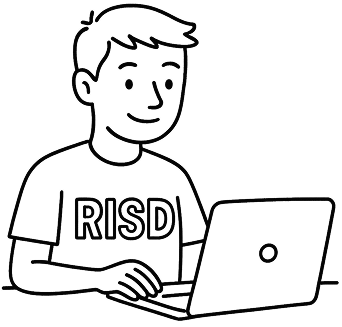 I landed a job within a couple months of graduating: the first-hire designer at a startup called Centerseat, which had a grungy office around Union Square. I couldn't believe my luck that someone would actually pay me to do work I found fun and absorbing. That feeling — the thrill of building something meaningful — has been the thread running through everything since.
I landed a job within a couple months of graduating: the first-hire designer at a startup called Centerseat, which had a grungy office around Union Square. I couldn't believe my luck that someone would actually pay me to do work I found fun and absorbing. That feeling — the thrill of building something meaningful — has been the thread running through everything since.
The work at Centerseat was designing interfaces for live video streaming as well as companion static content. This was before YouTube or Vimeo or any of the other video streaming services that exist today. It was exciting to work on problems that would later become mainstream, 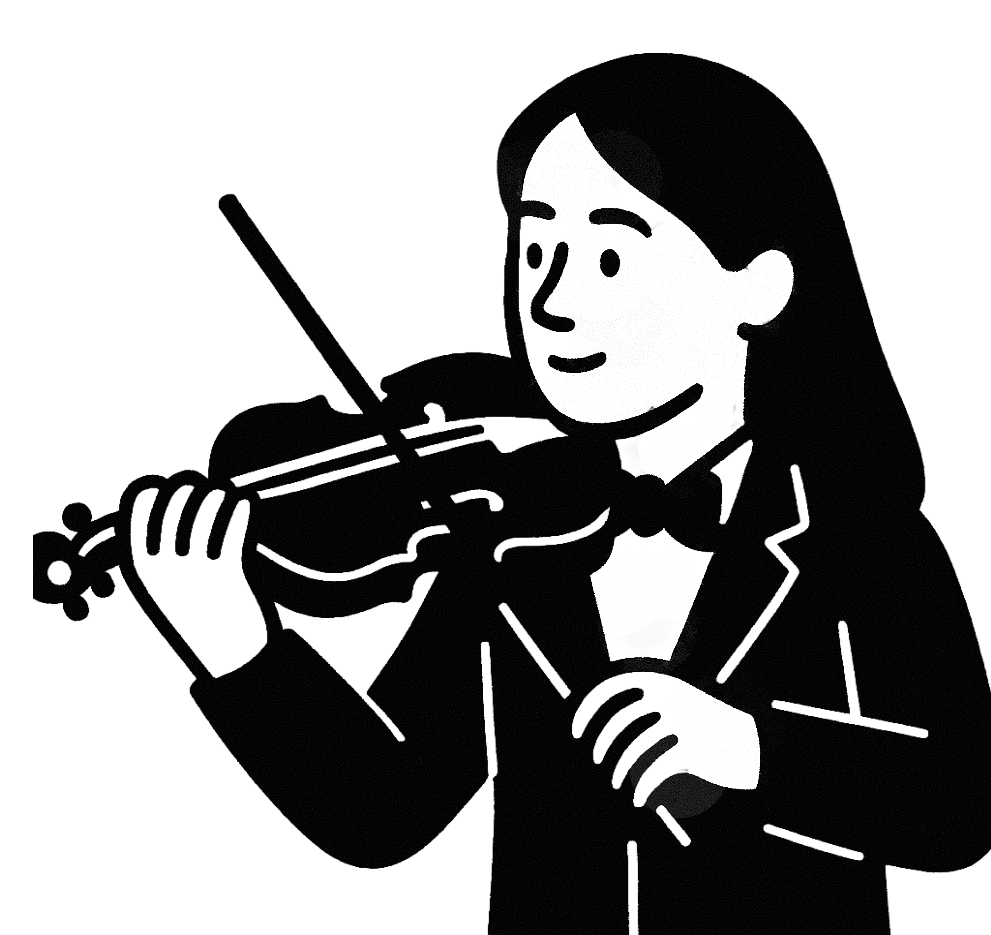 and I loved the idea of bringing things like the New York Philharmonic's performances to viewers around the world. The idea of front-end web developers didn't exist yet, and I wrote all my own HTML... in tables because CSS wasn't widely adopted yet. I didn't know it at the time, but this crash course in video technology would come in handy later in my career.
and I loved the idea of bringing things like the New York Philharmonic's performances to viewers around the world. The idea of front-end web developers didn't exist yet, and I wrote all my own HTML... in tables because CSS wasn't widely adopted yet. I didn't know it at the time, but this crash course in video technology would come in handy later in my career.
Like a lot of companies of that era, Centerseat didn't make it, shutting it's doors shortly after Sept. 11, 2011.
In the post-9/11 years, I found my place at Citizens Union managing gothamgazette.com, a politics and policy website focused on NYC's rebuilding efforts. We had a small office in a walk-up building (I remember hauling my commuter bike up and down those stairs) a few blocks from where the twin towers had stood. As a New Yorker, it was a great opportunity to contribute during a really tough period of time in the city. 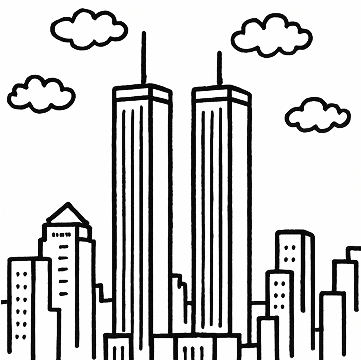 There were 6 people on staff, all writers except for me. I taught myself PHP and MySQL and built a custom CMS to manage our articles. I woke at 5am every day to publish our daily news roundup. With the editors, I built award-winning interactive games in Flash that helped people understand how the city ran, as well as contributing original reporting alongside the day-to-day design work. It showed me how much I love working with a team to create something that really matters, as well as how determination and grit can make impossible things happen. More than that, it taught me that the work itself has to matter — not just to me, but to the people who read, use, and interact with what we build.
There were 6 people on staff, all writers except for me. I taught myself PHP and MySQL and built a custom CMS to manage our articles. I woke at 5am every day to publish our daily news roundup. With the editors, I built award-winning interactive games in Flash that helped people understand how the city ran, as well as contributing original reporting alongside the day-to-day design work. It showed me how much I love working with a team to create something that really matters, as well as how determination and grit can make impossible things happen. More than that, it taught me that the work itself has to matter — not just to me, but to the people who read, use, and interact with what we build.
A few years later, I found a new role I was excited about -- and that had more normal hours -- in education technology at a small company called Schoolnet. It was really formative. First, it's humbling designing software that millions of students, teachers, and families will use every day. But more, this is where I learned the craft of UX, the basics of usability, how to make wireframes and mockups for developers, craft design principles, and more. 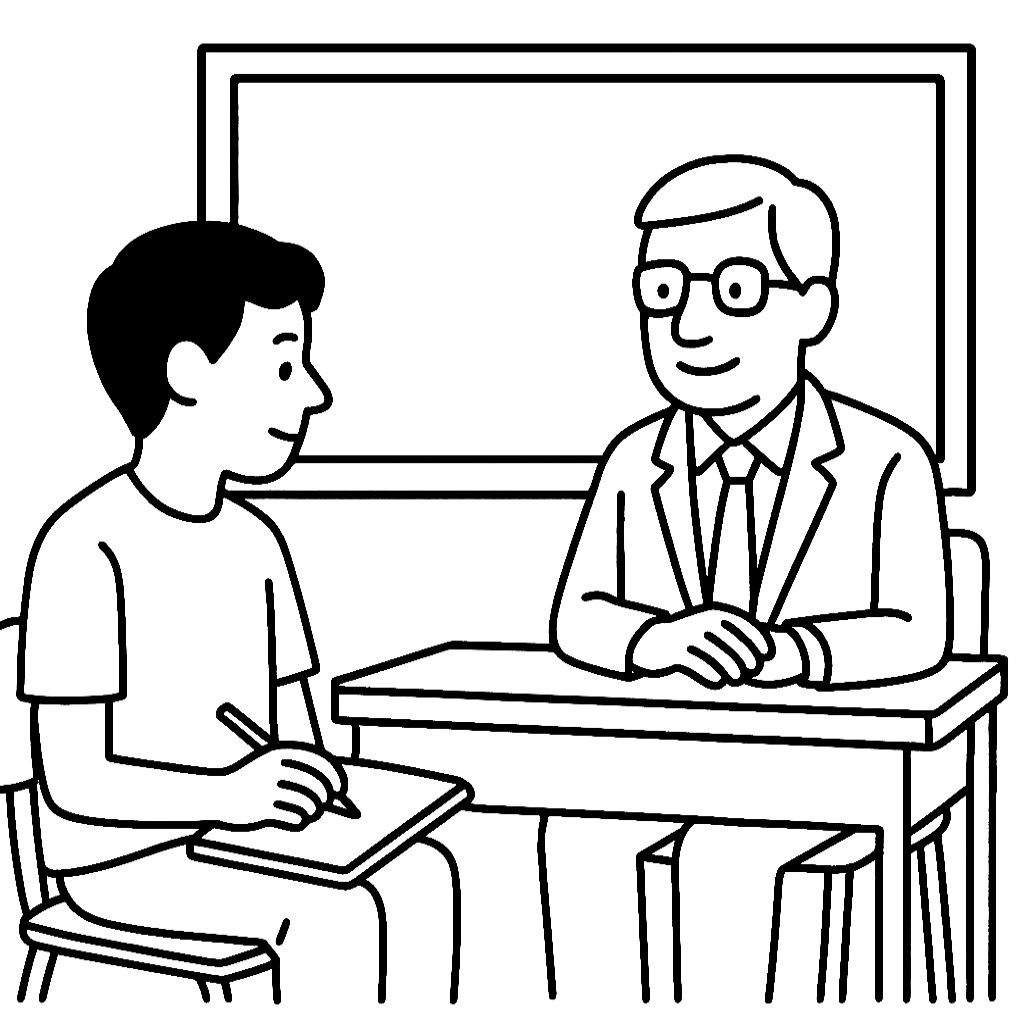 In 2004, I took the Amtrak to Philadelphia and spent two days interviewing teachers and administrators at a few schools around the city — my first research experience. I had great mentors at Schoolnet (Neil W and Alex K), who got me excited about UX and the discipline of user-centered design. They showed me that great design isn't about what looks good — it's about understanding people so deeply that you can solve problems they didn't even know they had.
In 2004, I took the Amtrak to Philadelphia and spent two days interviewing teachers and administrators at a few schools around the city — my first research experience. I had great mentors at Schoolnet (Neil W and Alex K), who got me excited about UX and the discipline of user-centered design. They showed me that great design isn't about what looks good — it's about understanding people so deeply that you can solve problems they didn't even know they had.
I had always wanted to work at a top agency, and jumped at the opportunity to join Razorfish in 2006. I was working alongside next-level designers and story-tellers, and I quickly saw where I needed to up my game. I got to work with major brands like Ford and Polo Ralph Lauren and sharpened my stakeholder management skills in these years. I studied the work of the great designers who were my peers and supervisors. I developed a love for typography. I spent three days a week in Detroit 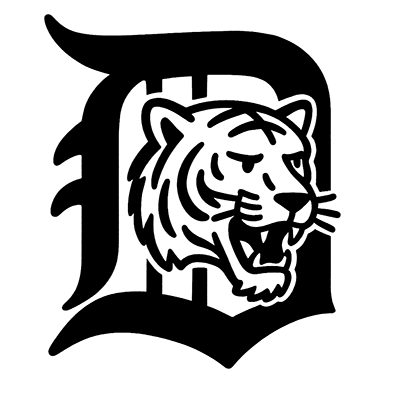 for nearly a year and bonded with colleagues who became lifelong friends. To bring our designs to life, we created primitive clickable prototypes using jpg exports, simple html and javascript (this was before software like InVision pioneered easy ways to do this). I loved the challenge of translating big brand strategies into actual user experiences. And it was a thrill to see our work on ford.com. It was during this time that I also started working as a people manager, and found a passion for leading teams. I discovered that I get as much satisfaction from watching someone else succeed as from my own accomplishments — maybe more.
for nearly a year and bonded with colleagues who became lifelong friends. To bring our designs to life, we created primitive clickable prototypes using jpg exports, simple html and javascript (this was before software like InVision pioneered easy ways to do this). I loved the challenge of translating big brand strategies into actual user experiences. And it was a thrill to see our work on ford.com. It was during this time that I also started working as a people manager, and found a passion for leading teams. I discovered that I get as much satisfaction from watching someone else succeed as from my own accomplishments — maybe more.
In time I got an opportunity to lead an ed-tech design team, in-house product-making, and it felt like the right opportunity to take my earlier lessons and exercise on a bigger stage. I hand-built a UX department out of nothing at Pearson North America, a textbook publisher with inroads into learning management systems. I hired very green junior designers 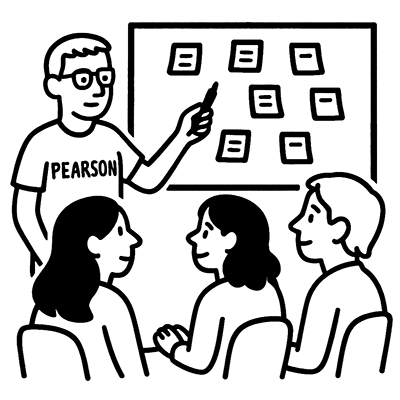 and trained them how to be scrappy, resourceful fighters for the user: how to produce the highest-quality design work; how to partner with engineers, product managers, and stakeholders; how to validate and test assumptions in design. We supported nine SCRUM teams on two-week sprint cycles. Two of those designers went on to very successful careers at Meta and Google, something I take a lot of pride in. Another found their passion in research and pursued a career in UXR. Those experiences taught me that building great teams is about more than hiring talent — it's about creating the conditions where people can discover what they're capable of.
and trained them how to be scrappy, resourceful fighters for the user: how to produce the highest-quality design work; how to partner with engineers, product managers, and stakeholders; how to validate and test assumptions in design. We supported nine SCRUM teams on two-week sprint cycles. Two of those designers went on to very successful careers at Meta and Google, something I take a lot of pride in. Another found their passion in research and pursued a career in UXR. Those experiences taught me that building great teams is about more than hiring talent — it's about creating the conditions where people can discover what they're capable of.
I was recruited by Huge to come and run a couple projects for them, and after a few years at a corporate megalith like Pearson, I felt ready for something new. I have three reflections from my time there: (1) The most talented "pure" design team I've ever come across, it's not even close, particularly the people they hired from Brazil; (2) lots of opportunities for growth in their UX process which was deeply waterfall (I made some major changes on my own projects to become more iterative and lean); (3) it's really hard to experience the full product lifecycle at an agency. This last one nagged at me the most, and I longed to be back in house and on the ground.
It was at that time that an ex-colleague connected me with an early-stage startup called Everplans. I went to meet the founders in their loft office on the 10th floor of a nondescript building in Flatiron. There were two co-founders and they needed a designer to help launch a new product which would help families get organized with all their critical information in case something bad or unexpected happened: end-of-life planning they called it. They were charming, sincere, intelligent, had a vision I could get behind, seemed to know what they were doing, and had good track-records. I couldn't wait to start.
I was a UX team of one working with a handful of developers and the founders to pull a rabbit out of a hat. It was my first true start-up, zero-to-one, from the ground up experience and, for everything I had to offer (which was not nothing), I got back 3x in what I learned. 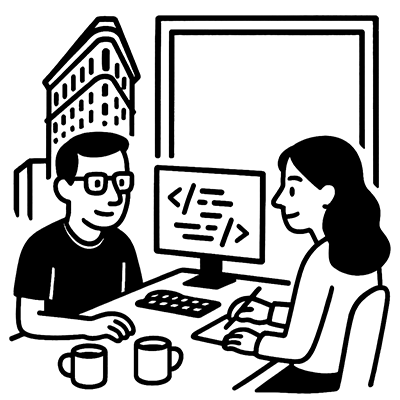 There were highs: the v1 product launch, a tightly bonded team with some genuinely talented and hilarious characters, the original user research, adopting the react framework early and seeing what it could do, signing our first enterprise clients and signing more and more. A direct report to one of the founders allowed me to ride shotgun in building a business — all the grit, hustle, and imagination it really takes. Those are lessons you will never get in school. Never.
There were highs: the v1 product launch, a tightly bonded team with some genuinely talented and hilarious characters, the original user research, adopting the react framework early and seeing what it could do, signing our first enterprise clients and signing more and more. A direct report to one of the founders allowed me to ride shotgun in building a business — all the grit, hustle, and imagination it really takes. Those are lessons you will never get in school. Never.
But the product experience was also a really difficult problem to solve: all my user research indicated that our product was solid, easy-to-use, attractive, and served a need people genuinely had. All the users swore it was great, they loved it! And yet engagement lagged: how do you get people to engage with a product they see as valuable but that's also, not to put too fine a point on it, but, kinda depressing in its nature. People don't want to think about death. It scares them. And the work they needed to put into getting organized was a lot. We tried many experiments to activate engagement I can summarize it like this, which is probably obvious to an outsider: small, easy-to-accomplish tasks (basic behavioral science) work best. That turned out to be the secret to our engagement and we reoriented the product's point-of-view around small tasks. This was a big shift. The lesson stuck with me: sometimes the most elegant solution isn't the most complex one. Sometimes it's about meeting people exactly where they are, not where you think they should be.
Still, Everplans struggled, laying off staff when funding got tight, and the pressure of working from funding round to funding round eventually wore me down and I said goodbye when the Covid pandemic hit, about a year before the company was acquired by a large financial services organization.
Looking for a way to make a difference during the pandemic, I found Teladoc Health, a telemedicine focused company which at the time was experiencing incredible growth. I quickly carved out a niche doing something nobody else really wanted to: provider experience. This became my jam: it was complex, multifaceted, meaty as hell, and had so many intertwined workflows and personas and technology systems to unravel that your mind reeled. And also, the UX was so, so bad. A tragedy in pixels. I was on a mission to do things better: user research, usability studies, accessibility, standardized design patterns, I used every skill I had, and I loved it!
I ended up running a team in a division of the company that sold actual designed-in-house telemedicine hardware (cameras, displays, mics, carts, etc.) into health systems and hospitals 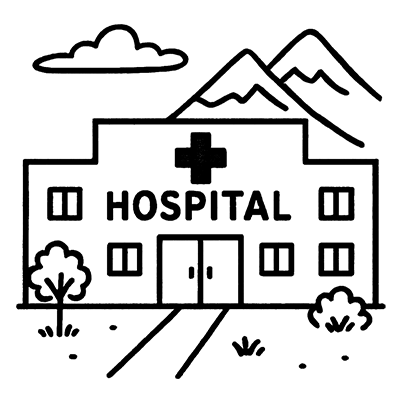 . My job was to make the user experience sitting on top of their software, hardware, and platforms more intuitive, streamlined, and sticky. I had a great design team with me from all around the world: Texas, Ohio, California, Argentina, Poland, Ukraine, some of whom I hired, some inherited. The work was fast-paced and exciting. And because this hardware-focused business operated as a separate division, and there was no-one who sat above me in design, I took the opportunity to re-imagine who we were. We innovated novel and impactful ways of working with product and engineering and produced incredible design that solved seemingly intractable problems.
. My job was to make the user experience sitting on top of their software, hardware, and platforms more intuitive, streamlined, and sticky. I had a great design team with me from all around the world: Texas, Ohio, California, Argentina, Poland, Ukraine, some of whom I hired, some inherited. The work was fast-paced and exciting. And because this hardware-focused business operated as a separate division, and there was no-one who sat above me in design, I took the opportunity to re-imagine who we were. We innovated novel and impactful ways of working with product and engineering and produced incredible design that solved seemingly intractable problems.
What I'm most proud of from Teladoc is the work we did on patient safety monitoring — technology that helps hospitals prevent patient falls by enabling one trained professional to watch 25 high-risk patients simultaneously through AI-powered video feeds. The research was gut-wrenching: learning about the human cost of these falls, the families whose loved ones never fully recovered, the healthcare workers who carry that weight. But it was also incredibly motivating. We designed interfaces that weren't just functional — they were compassionate. Multilingual communication tools, escalation workflows that got help to patients in seconds, documentation that tracked not just incidents but outcomes. When we launched, hospitals started reporting measurable decreases in falls. Real people were going home to their families instead of facing extended recoveries or worse. That's the kind of work I live for.
Teladoc taught me that I do my best work when I'm building something authentically and holistically, when I can shape not just the design but the culture and the processes that make great design possible. It reinforced what I've learned throughout my career: that the most meaningful work happens when you combine deep technical craft with genuine empathy for the people you're designing for. And that building great things is always a team sport — the magic happens when you can create the conditions for brilliant people to do their best work together.
Looking back, I can see the through-line now. From that first job at Centerseat where I couldn't believe someone would pay me to do work I found fun, to designing technology that literally saves lives at Teladoc — it's all been about the same thing. Building things that matter. Working with people who care as much as I do. And never losing sight of the fact that behind every interface, every interaction, every pixel, there's a human being trying to get something done. That's what gets me up in the morning. That's what I'm looking for in whatever comes next.
 I landed a job within a couple months of graduating: the first-hire designer at a startup called Centerseat, which had a grungy office around Union Square. I couldn't believe my luck that someone would actually pay me to do work I found fun and absorbing. That feeling — the thrill of building something meaningful — has been the thread running through everything since.
I landed a job within a couple months of graduating: the first-hire designer at a startup called Centerseat, which had a grungy office around Union Square. I couldn't believe my luck that someone would actually pay me to do work I found fun and absorbing. That feeling — the thrill of building something meaningful — has been the thread running through everything since. and I loved the idea of bringing things like the New York Philharmonic's performances to viewers around the world. The idea of front-end web developers didn't exist yet, and I wrote all my own HTML... in tables because CSS wasn't widely adopted yet. I didn't know it at the time, but this crash course in video technology would come in handy later in my career.
and I loved the idea of bringing things like the New York Philharmonic's performances to viewers around the world. The idea of front-end web developers didn't exist yet, and I wrote all my own HTML... in tables because CSS wasn't widely adopted yet. I didn't know it at the time, but this crash course in video technology would come in handy later in my career. There were 6 people on staff, all writers except for me. I taught myself PHP and MySQL and built a custom CMS to manage our articles. I woke at 5am every day to publish our daily news roundup. With the editors, I built award-winning interactive games in Flash that helped people understand how the city ran, as well as contributing original reporting alongside the day-to-day design work. It showed me how much I love working with a team to create something that really matters, as well as how determination and grit can make impossible things happen. More than that, it taught me that the work itself has to matter — not just to me, but to the people who read, use, and interact with what we build.
There were 6 people on staff, all writers except for me. I taught myself PHP and MySQL and built a custom CMS to manage our articles. I woke at 5am every day to publish our daily news roundup. With the editors, I built award-winning interactive games in Flash that helped people understand how the city ran, as well as contributing original reporting alongside the day-to-day design work. It showed me how much I love working with a team to create something that really matters, as well as how determination and grit can make impossible things happen. More than that, it taught me that the work itself has to matter — not just to me, but to the people who read, use, and interact with what we build.

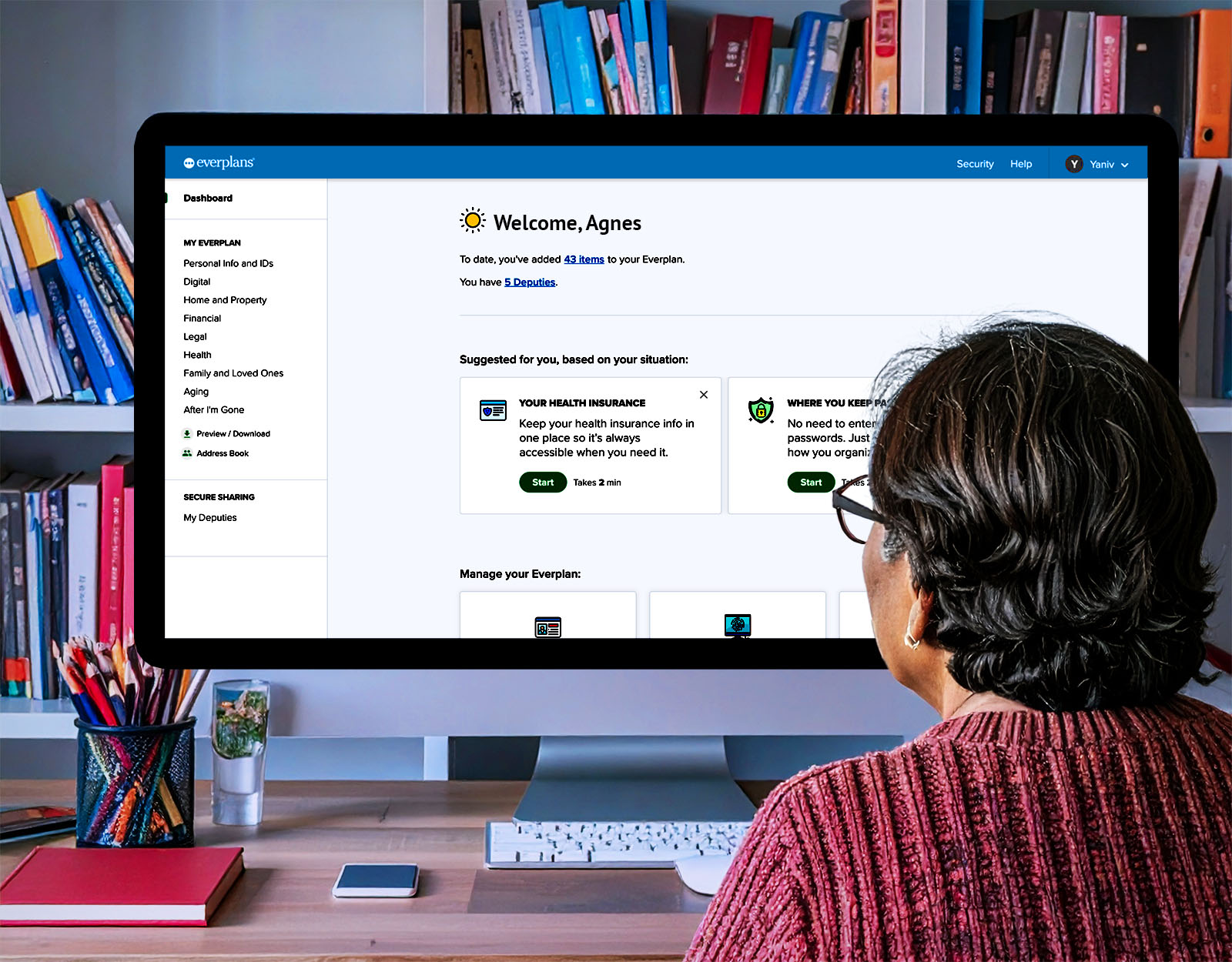
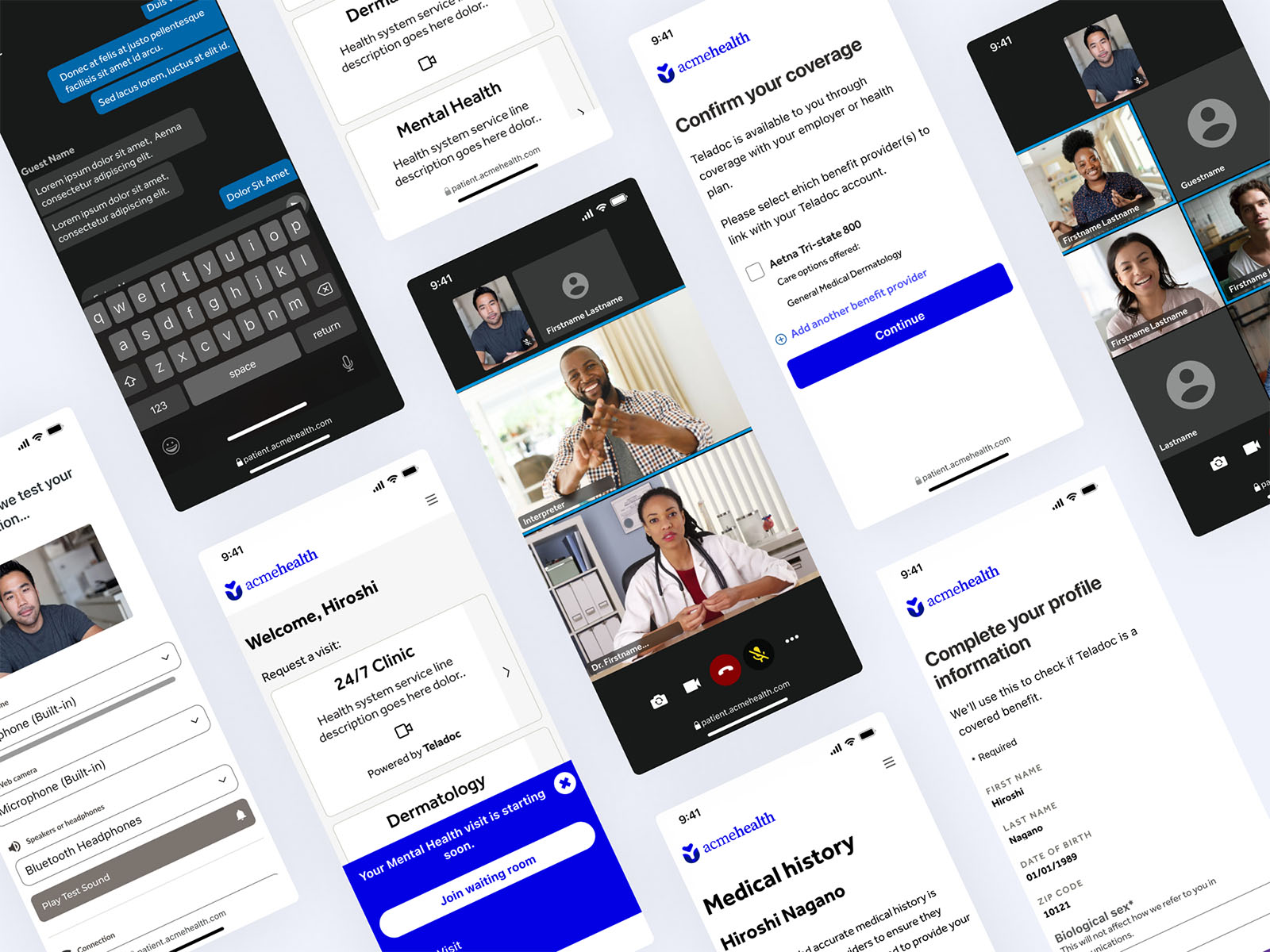
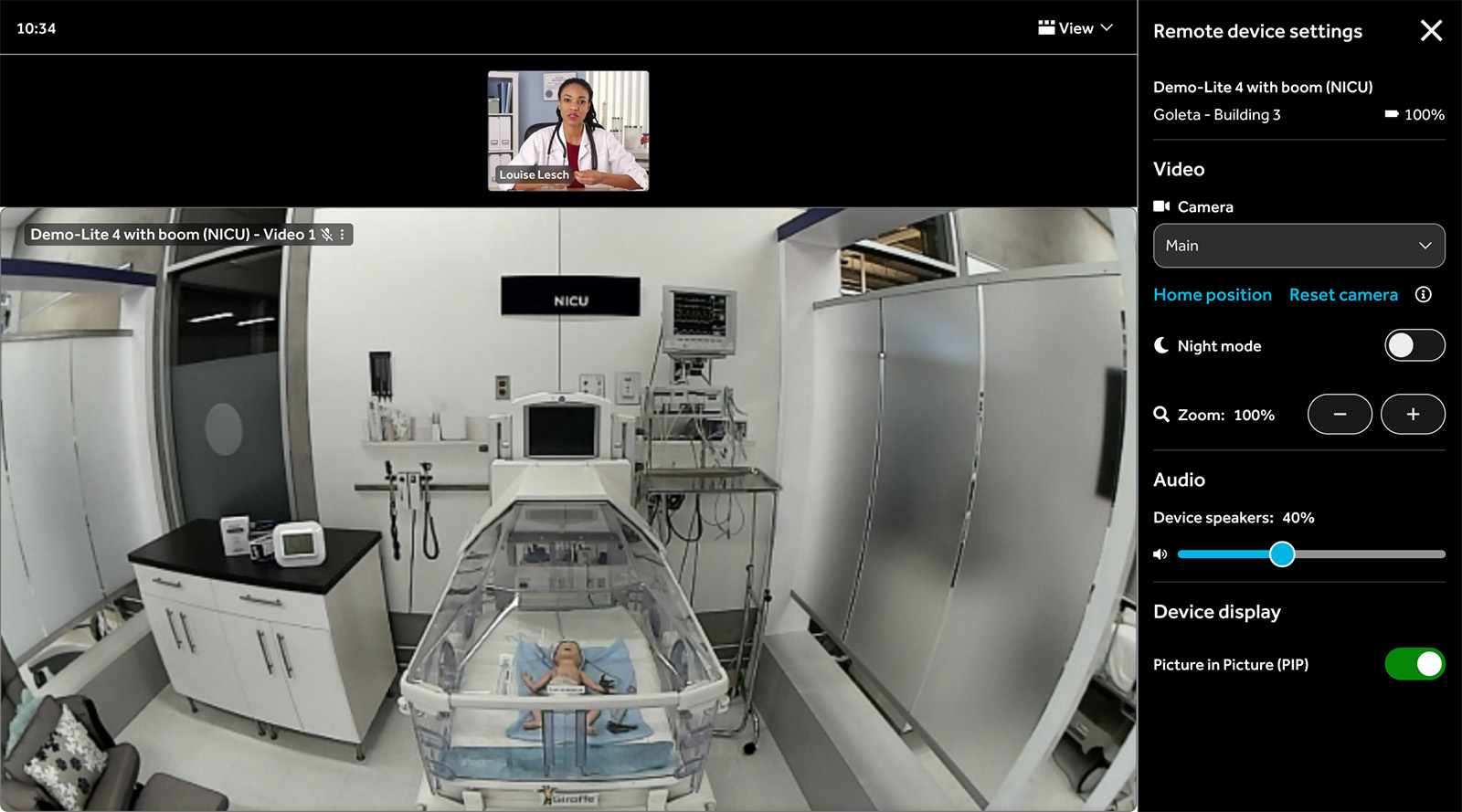
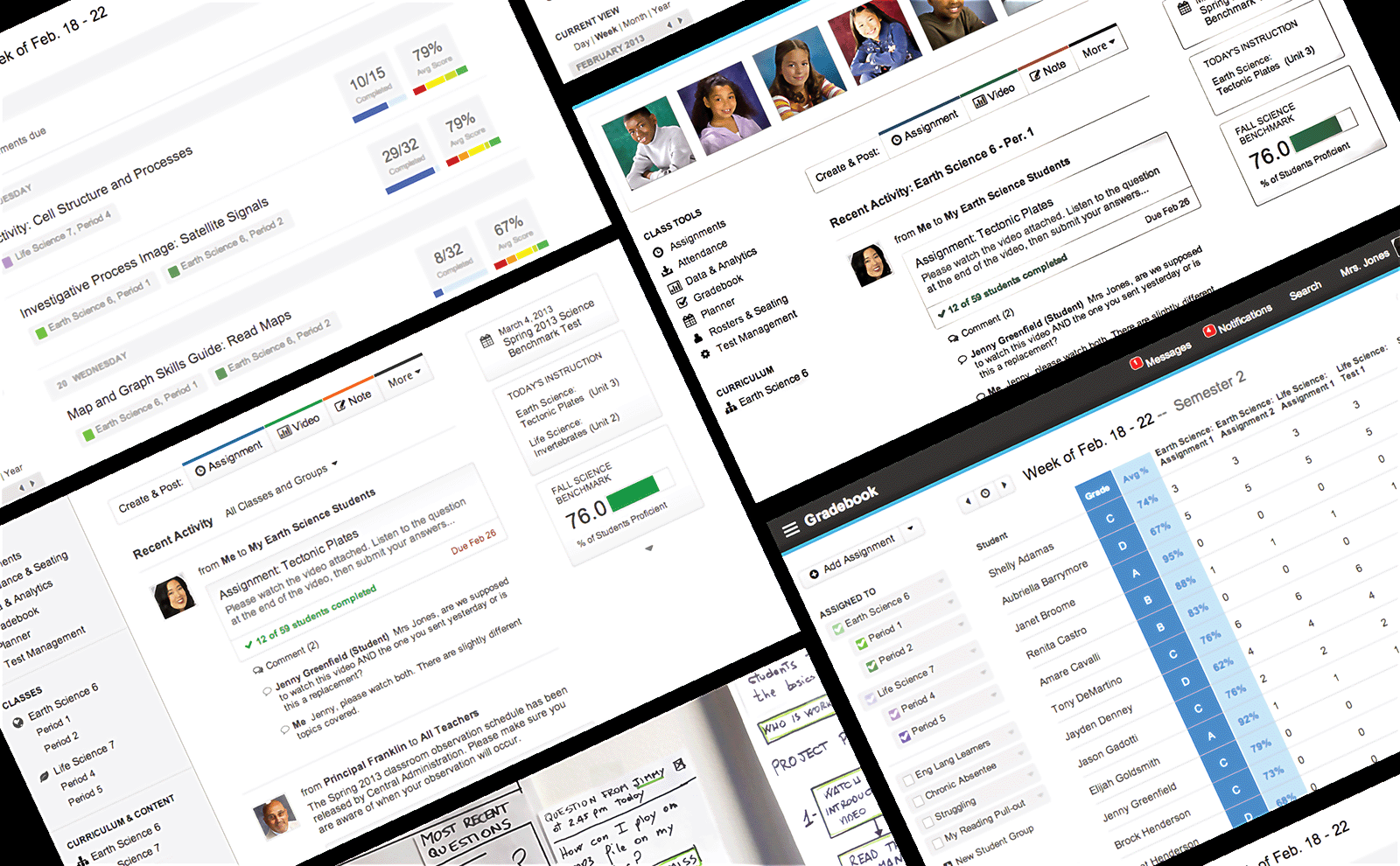
 In 2004, I took the Amtrak to Philadelphia and spent two days interviewing teachers and administrators at a few schools around the city — my first research experience. I had great mentors at Schoolnet (Neil W and Alex K), who got me excited about UX and the discipline of user-centered design. They showed me that great design isn't about what looks good — it's about understanding people so deeply that you can solve problems they didn't even know they had.
In 2004, I took the Amtrak to Philadelphia and spent two days interviewing teachers and administrators at a few schools around the city — my first research experience. I had great mentors at Schoolnet (Neil W and Alex K), who got me excited about UX and the discipline of user-centered design. They showed me that great design isn't about what looks good — it's about understanding people so deeply that you can solve problems they didn't even know they had. for nearly a year and bonded with colleagues who became lifelong friends. To bring our designs to life, we created primitive clickable prototypes using jpg exports, simple html and javascript (this was before software like InVision pioneered easy ways to do this). I loved the challenge of translating big brand strategies into actual user experiences. And it was a thrill to see our work on ford.com. It was during this time that I also started working as a people manager, and found a passion for leading teams. I discovered that I get as much satisfaction from watching someone else succeed as from my own accomplishments — maybe more.
for nearly a year and bonded with colleagues who became lifelong friends. To bring our designs to life, we created primitive clickable prototypes using jpg exports, simple html and javascript (this was before software like InVision pioneered easy ways to do this). I loved the challenge of translating big brand strategies into actual user experiences. And it was a thrill to see our work on ford.com. It was during this time that I also started working as a people manager, and found a passion for leading teams. I discovered that I get as much satisfaction from watching someone else succeed as from my own accomplishments — maybe more. and trained them how to be scrappy, resourceful fighters for the user: how to produce the highest-quality design work; how to partner with engineers, product managers, and stakeholders; how to validate and test assumptions in design. We supported nine SCRUM teams on two-week sprint cycles. Two of those designers went on to very successful careers at Meta and Google, something I take a lot of pride in. Another found their passion in research and pursued a career in UXR. Those experiences taught me that building great teams is about more than hiring talent — it's about creating the conditions where people can discover what they're capable of.
and trained them how to be scrappy, resourceful fighters for the user: how to produce the highest-quality design work; how to partner with engineers, product managers, and stakeholders; how to validate and test assumptions in design. We supported nine SCRUM teams on two-week sprint cycles. Two of those designers went on to very successful careers at Meta and Google, something I take a lot of pride in. Another found their passion in research and pursued a career in UXR. Those experiences taught me that building great teams is about more than hiring talent — it's about creating the conditions where people can discover what they're capable of. There were highs: the v1 product launch, a tightly bonded team with some genuinely talented and hilarious characters, the original user research, adopting the react framework early and seeing what it could do, signing our first enterprise clients and signing more and more. A direct report to one of the founders allowed me to ride shotgun in building a business — all the grit, hustle, and imagination it really takes. Those are lessons you will never get in school. Never.
There were highs: the v1 product launch, a tightly bonded team with some genuinely talented and hilarious characters, the original user research, adopting the react framework early and seeing what it could do, signing our first enterprise clients and signing more and more. A direct report to one of the founders allowed me to ride shotgun in building a business — all the grit, hustle, and imagination it really takes. Those are lessons you will never get in school. Never. . My job was to make the user experience sitting on top of their software, hardware, and platforms more intuitive, streamlined, and sticky. I had a great design team with me from all around the world: Texas, Ohio, California, Argentina, Poland, Ukraine, some of whom I hired, some inherited. The work was fast-paced and exciting. And because this hardware-focused business operated as a separate division, and there was no-one who sat above me in design, I took the opportunity to re-imagine who we were. We innovated novel and impactful ways of working with product and engineering and produced incredible design that solved seemingly intractable problems.
. My job was to make the user experience sitting on top of their software, hardware, and platforms more intuitive, streamlined, and sticky. I had a great design team with me from all around the world: Texas, Ohio, California, Argentina, Poland, Ukraine, some of whom I hired, some inherited. The work was fast-paced and exciting. And because this hardware-focused business operated as a separate division, and there was no-one who sat above me in design, I took the opportunity to re-imagine who we were. We innovated novel and impactful ways of working with product and engineering and produced incredible design that solved seemingly intractable problems.